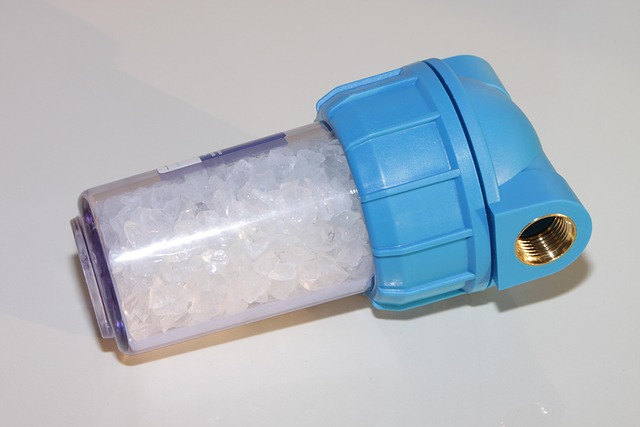Hard water, rich in calcium and magnesium, causes pressure drops, appliance wear, and poor detergent performance. Water softeners, using ion exchange or reverse osmosis, remove these minerals, restoring pressure and enhancing cleaning efficiency. Detergents designed for hard water cut through scale deposits with ingredients like water softeners or enzymes. Softeners extend appliance lifespan, save energy, and reduce utility bills. Types include ion exchange and salt-free systems. Softeners boost detergent effectiveness; regular testing and usage instructions ensure optimal results.
Hard water can leave your dishes spotty, your clothes stiff, and your skin dry. Understanding the impact of mineral-rich hard water is the first step towards a solution. This article guides you through identifying detergents designed for hard water and explores the benefits of using water softeners. We’ll delve into different softening technologies and offer tips for optimal detergent usage, helping you navigate this challenging issue with ease. Discover how water softeners can transform your cleaning routine!
- Understanding Hard Water and Its Impact
- Identifying Detergents Designed for Hard Water
- Benefits of Using Water Softeners
- Types of Water Softening Technologies
- Tips for Effective Hard Water Detergent Usage
Understanding Hard Water and Its Impact

Hard water, a common issue in many regions, is characterized by high mineral content, primarily calcium and magnesium. These minerals can build up in pipes, appliances, and fabrics, leading to reduced water pressure and increased wear and tear on household items. The impact of hard water goes beyond just clogged pipes; it also affects the performance of detergents, making it more challenging to achieve a thorough clean. This is where water softeners come into play as an essential solution.
Water softeners are designed to mitigate the effects of hard water by replacing these minerals with others that are less harmful. They work through various processes, such as ion exchange or reverse osmosis, to remove calcium and magnesium ions from the water supply. By doing so, they not only improve water pressure but also enhance the effectiveness of detergents, ensuring a deeper clean for your clothes, dishes, and other laundry without leaving behind unsightly spots or residue.
Identifying Detergents Designed for Hard Water

Identifying detergents designed for hard water is a smart move for those dealing with mineral-rich water supplies. These specialized products are formulated to cut through the buildup of calcium and magnesium deposits, often referred to as scale, that can leave behind stains and reduce cleaning efficiency. Look for key ingredients like water softeners or enzymes that specifically target these minerals. Water softeners, for instance, exchange hard water minerals for softer ones, ensuring better detergent performance. Enzymes, on the other hand, break down dirt and oils, leaving your clothes spotless even in mineral-rich water. By choosing detergents with these features, you can ensure thorough cleaning without the hassle of regular scale buildup maintenance.
Benefits of Using Water Softeners

Using water softeners, such as detergents formulated for hard water, offers numerous benefits that go beyond just better cleaning performance. In areas with high mineral content in the local water supply, hard water can leave behind unsightly spots and stains on dishes and clothing, making it a common household nuisance. Water softeners help alleviate these issues by reducing the presence of calcium and magnesium ions, the primary culprits responsible for hard water’s adverse effects.
Moreover, regular use of water softeners can extend the lifespan of appliances like washing machines and dishwashers, which are often subject to buildup from mineral deposits. By softening the water, these devices work more efficiently, using less energy in the process, thereby saving users money on their utility bills over time. This is particularly beneficial for households that prioritize sustainability and cost-effectiveness.
Types of Water Softening Technologies

There are primarily two types of water softening technologies commonly used today: ion exchange and salt-free (remineralization). Ion exchange water softeners are the most traditional and widely used. They work by replacing hard water minerals, like calcium and magnesium, with softer ions from a resin material. This process effectively reduces water hardness while also improving water quality.
Salt-free water softeners, on the other hand, employ different mechanisms to soften water. They don’t use salt or chemicals and instead rely on technologies such as electrolysis or ceramic filters. These systems claim to soften water without the need for regular recharging or filter replacement, offering an environmentally friendly alternative.
Tips for Effective Hard Water Detergent Usage

When using detergents for hard water, it’s essential to follow some simple tips for optimal results. First, consider incorporating a water softener into your routine; these products help break down and dissolve minerals that cause water hardness, allowing detergents to work more efficiently. Regularly testing your water quality can also be beneficial; this way, you’ll know exactly how much softener is needed.
Additionally, pre-treating hard water spots with a water softener before running the wash cycle can significantly improve cleaning performance. Remember, using the right amount of detergent for each load—following the manufacturer’s instructions—is crucial to prevent residue buildup and ensure your clothes come out clean and fresh.
